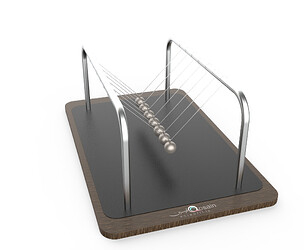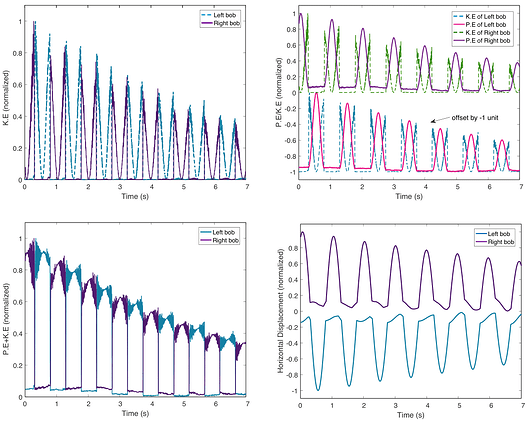Exploring the physics of the newton’s cradle with complete data recording and plotting
Overview
• Conservation of momentum and energy.
• Physics of the newton’s cradle with video tracking.
• Extraction of real-world movement data from the video.
• Complete cycle of data recording, processing, and plotting.
• Using the data to acquire graphs for the kinetic and potential energy. velocity and acceleration of the balls.
How does it work?
Newton’s cradle has been used to demonstrate the conservation of momentum. Using a series of suspended spheres, hanging in straight horizontal alignment, it verifies the conservation of momentum and energy. When a sphere at one of the ends is raised and released to free fall, it strikes the adjacent stationary sphere and transmits a force along the resting balls to push the last one away. The last sphere swings outwards and strikes back the nearly stationary sphere, repeating the effect in the opposite direction. This entire sequel is recorded using a video camera which is sufficient to analyze most aspects of this motion. Space using PhysTrack, our Matlab based video tracking solution, data is extracted from the video to be represented graphically. Students obtain plots for the displacement, kinetic energy (K.E), and potential energy (P.E) of the rightmost and left most spheres of the cradle. These plots are displayed below and students are required to compare the theoretical results to verify the preservation of the law of energy.
Parts Included
• Stand to hold suspended balls
• Metallic balls
• String
Not included
• Camera with tripod
• DC Lights
You can get the PDF version of the brochure by clicking on this link.

